Mushrooms can be called native Russian mushrooms, as they are known exclusively in Russia and the countries of the former Union. They are appreciated for their taste and abundant harvest, which allows you to return from a "silent hunt" with a full basket. Before going to the forest, it is important to familiarize yourself with the photo of the fungus, its differences from the false species and the rules for collecting breasts, this will help to avoid mistakes in the collection.
Content
Characteristic Features
Different types of the Mlechnik genus are called lobes; sometimes several types of russula are also referred to them. Lactarius is the Latin name for this species, which in translation means “dairy”, “giving milk”.
There are both edible and inedible fruiting bodies of this genus. The Slavic word “breast” has the meaning “hill, heap” and gives an explanation of how mushrooms prefer to grow. The best in terms of gastronomic value are considered to be white and black breasts.
Appearance
Regardless of their color and appearance, mushrooms have similar external characteristics. A wide-brimmed hat with a concave shape with curved edges is a distinctive feature of the breast. The color scheme is quite wide - from white to black. The legs look tight and reach a height of up to 10 cm.
Structure and species differences
Depending on the place of growth and soil, the lacteans have different colors, but in general, all mushrooms are similar in their morphology.
Description of the main characteristics of the loaders:
- The hat is round in shape, reaches 20 cm in diameter, in some fruits - 28 cm. It is usually convex in young representatives of the species and becomes leukate in adult fruiting bodies. The hat has furry edges, wrapped down. With high humidity, the surface becomes mucous. The structure of the cap is fleshy. Its color ranges from white, gray, shades of yellow to dark gray and brown (depending on grade).
- The leg is not tall, reaches 10-12 cm, cylindrical in shape, dense and thick, without pimples or other formations on it. The shade of the leg directly depends on the color of the cap of the mushroom and is most similar to it.
- The plates are rather small and frequent, light, milky and pale brown.
- The pulp of the fruit has a light shade, which becomes yellow when pressed and interacted with air. From it flows milk juice, which has a pleasant mushroom aroma. The pulp is dense and fleshy. The red-brown and bitter milkman has a brittle and loose pulp that distinguishes them from other species.
Mushrooms always grow in heaps and this facilitates their search in the forest.
Habitat
The areola of growth of milkmen, a country with temperate climates of the Eurasian continent, grows almost everywhere on the territory of Russia, while different varieties of mushrooms prefer certain zones and areas:
- white breast - Volga, Siberia and the Urals;
- bitter - northern Europe and Asia;
- red-brown - in almost every country in Europe, Asia with a temperate climate;
- yellow - many European countries, mainly northern;
- poplar - a rare species today, grows at the mouth of the Volga;
- black - Ural, Siberia and other territories of Russia.
Mushrooms form mycorrhiza with both deciduous and coniferous species, sometimes appear in the steppe zones, choosing different types of soil, including marshy.
Since milky people prefer different types of forests and soils, they can often be found. Beginners need to pay attention to the fact that the fruits are hidden in leaves, moss and needles. A short leg allows them to be almost invisible, so you need to bend lower and take a closer look. All species love fairly light glades, hillocks and grow in middle-aged forests with low grass cover.
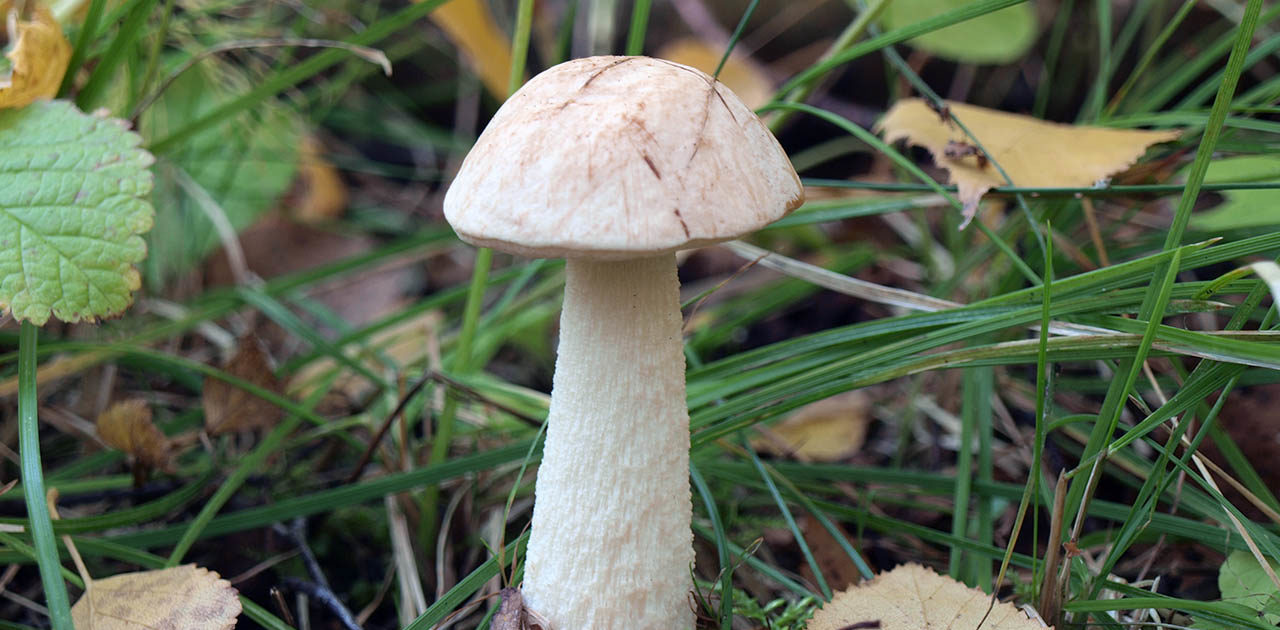 You may be interested in:
You may be interested in:Eating
For many years on the territory of Russia, it was lump that was the main industrial type of representatives of its kingdom, it was appreciated and used both for personal needs and for sale.
Types of edible mushrooms and their description with photos
The main edible types of milkers:
- The real one, it is white, has a snow-white hat of a typical shape for breasts, a short hollow leg and a flesh with a pleasant aroma, which turns yellow at the fault point. Grows in groups. The fruiting period is July-September.
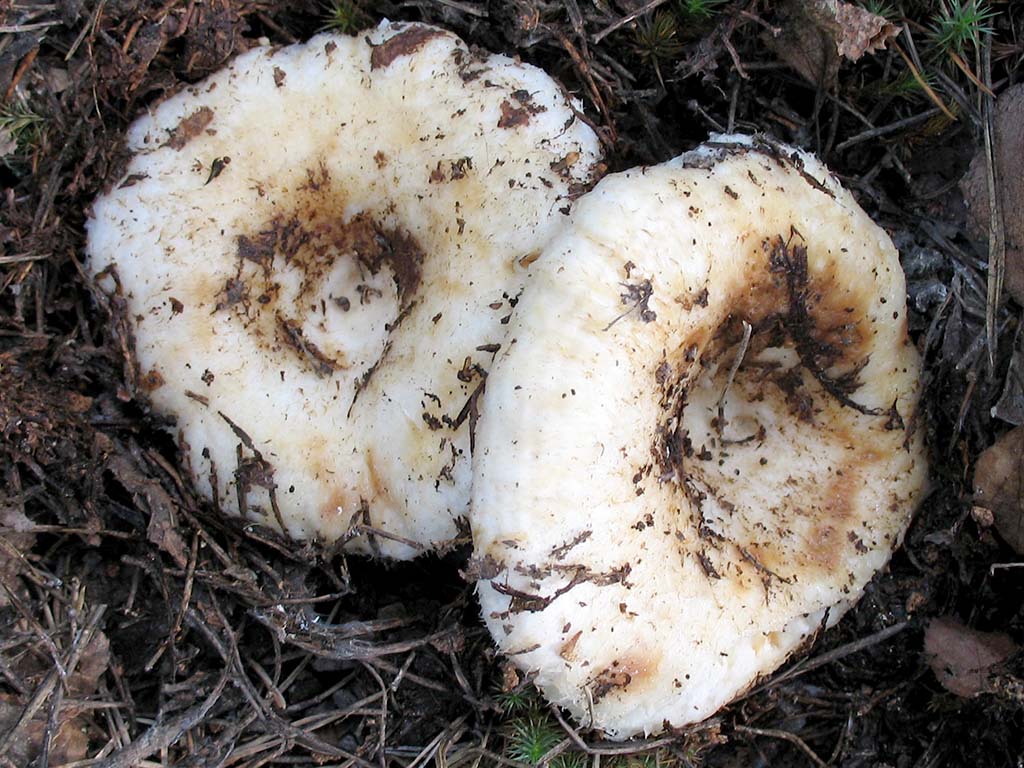
Real chest - Yellow or yellow raven - this species is distinguished by its golden hat, often having small scales on the surface. Leg of small size and dense structure, flesh of white color, yellower when pressed. The plates have brown spots. Harvest time is July - early October.
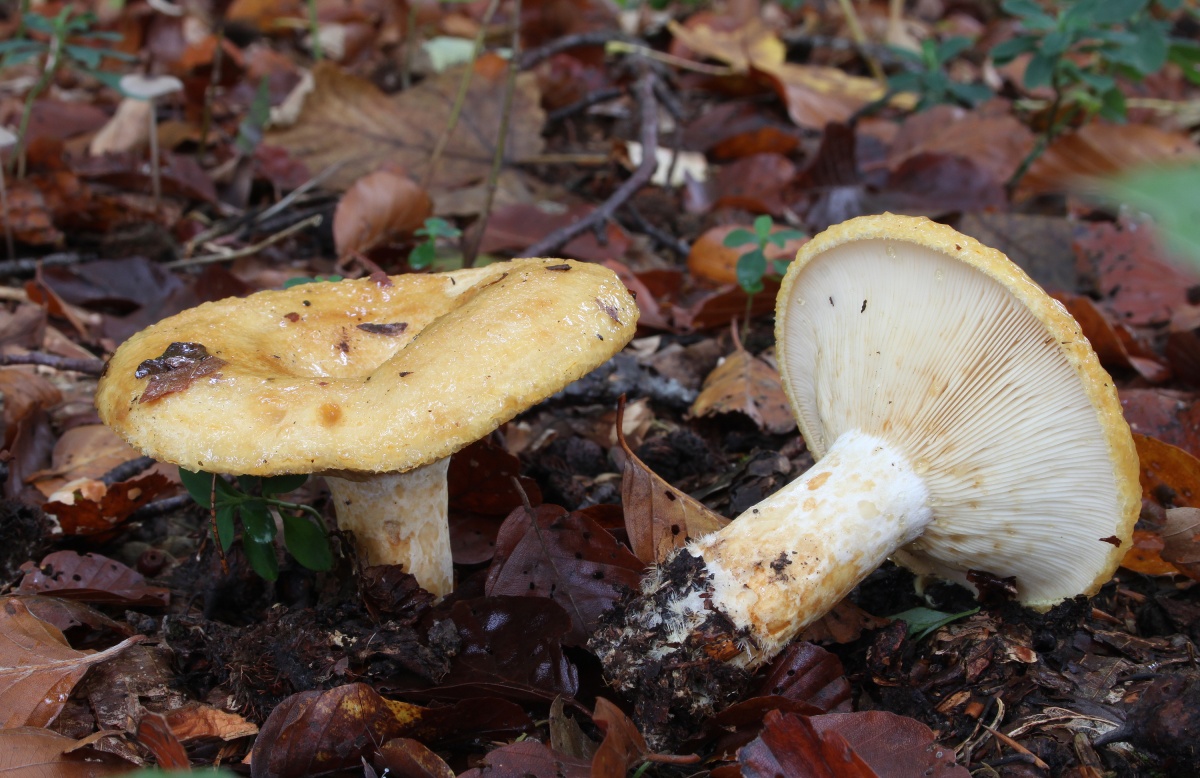
Yellow chest - The bitter chest has a hat of brown or reddish hue, concave shape and small diameter. The leg is cylindrical and thinner than other species. The pulp is brittle, and the milky juice is odorless, bitter in taste. Prefers acidic soils, grows in July-October.
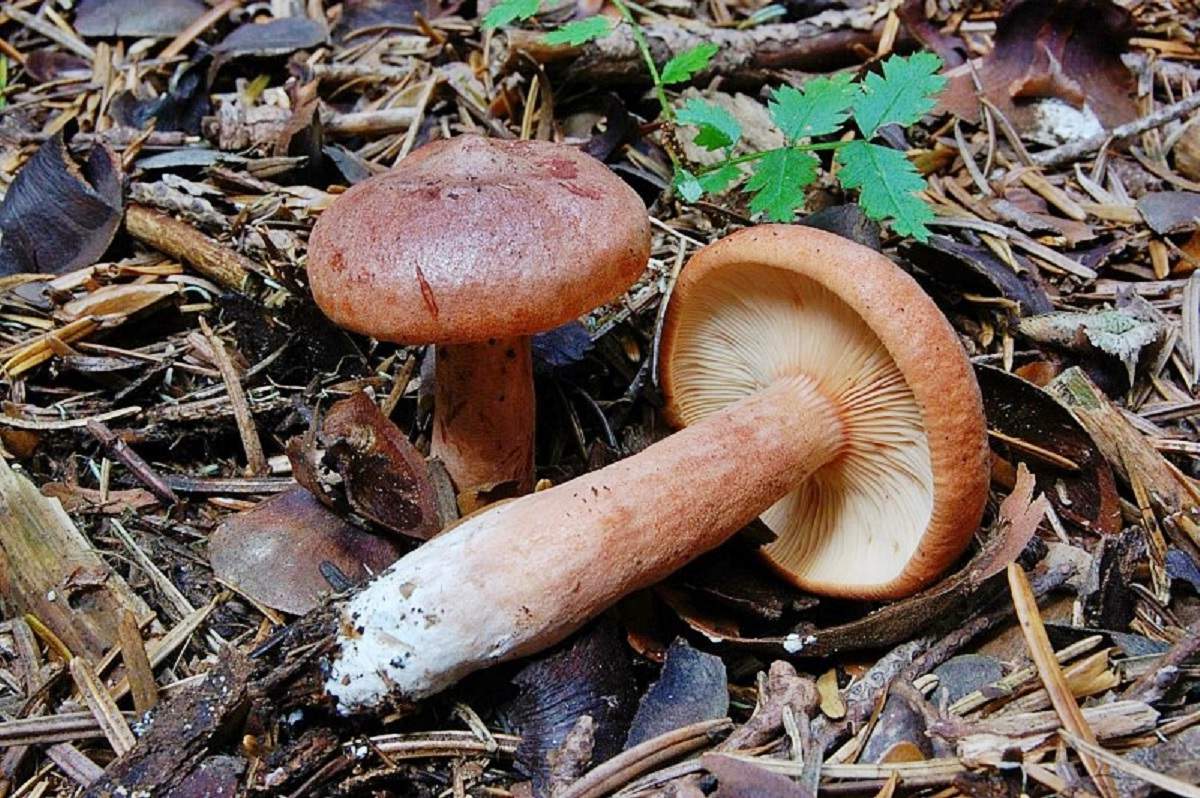
Bitter bitter - The red-brown look is distinguished by a large hat with a diameter of up to 20 cm, brown in color, the edges of which are bent inward. The leg is velvety and strong, the color of a hat. The plates are light, slightly pinkish, darken when pressed. The pulp has an interesting aroma, similar to crab meat, tastes sweet. It grows from early August to October.
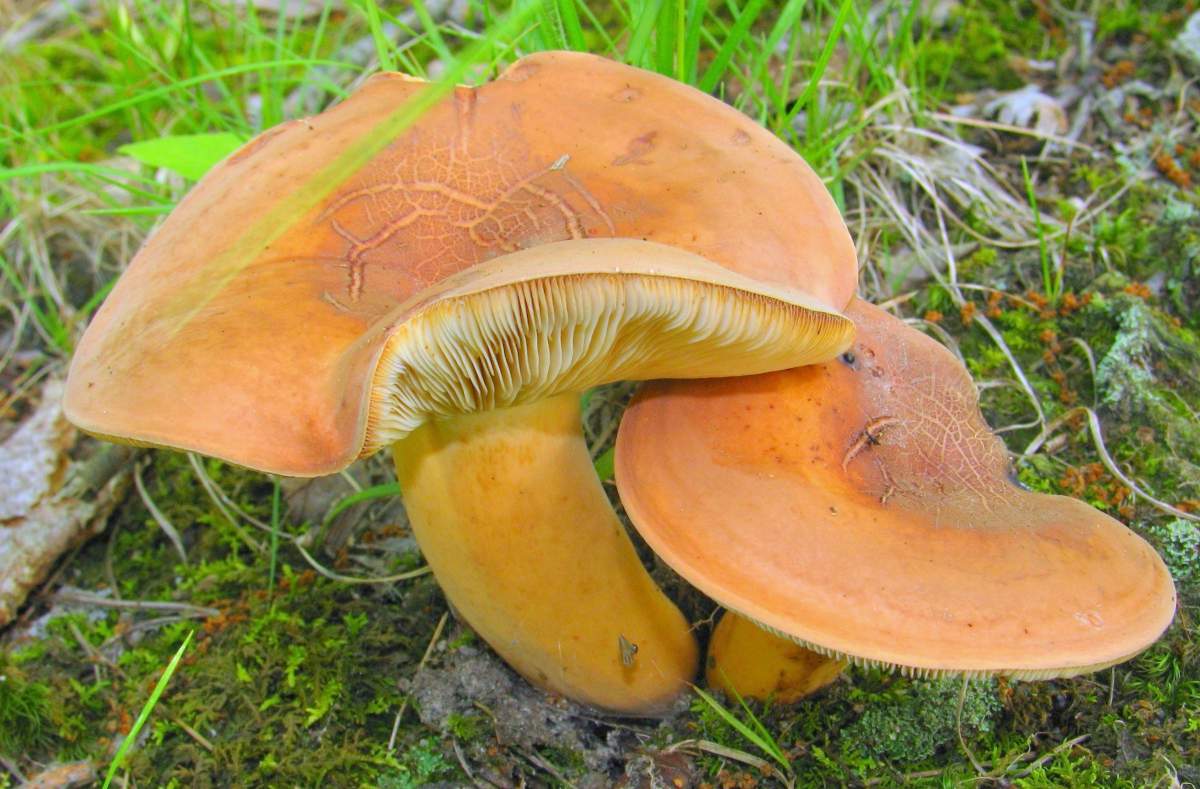
Breast red brown
Characteristic features of conditionally edible breasts:
- A black mushroom or nigella got its name for the color of its hat. Its shape is round-funnel, in diameter from 7 to 20 cm. Leg narrowed from below, smooth structure, diameter up to 3 cm, low and dense. The plates are cream-colored, and the flesh gives off bitter juice, because of it black breasts fall into the category of conditionally edible. It grows from July to October, but can also occur after the first frost.
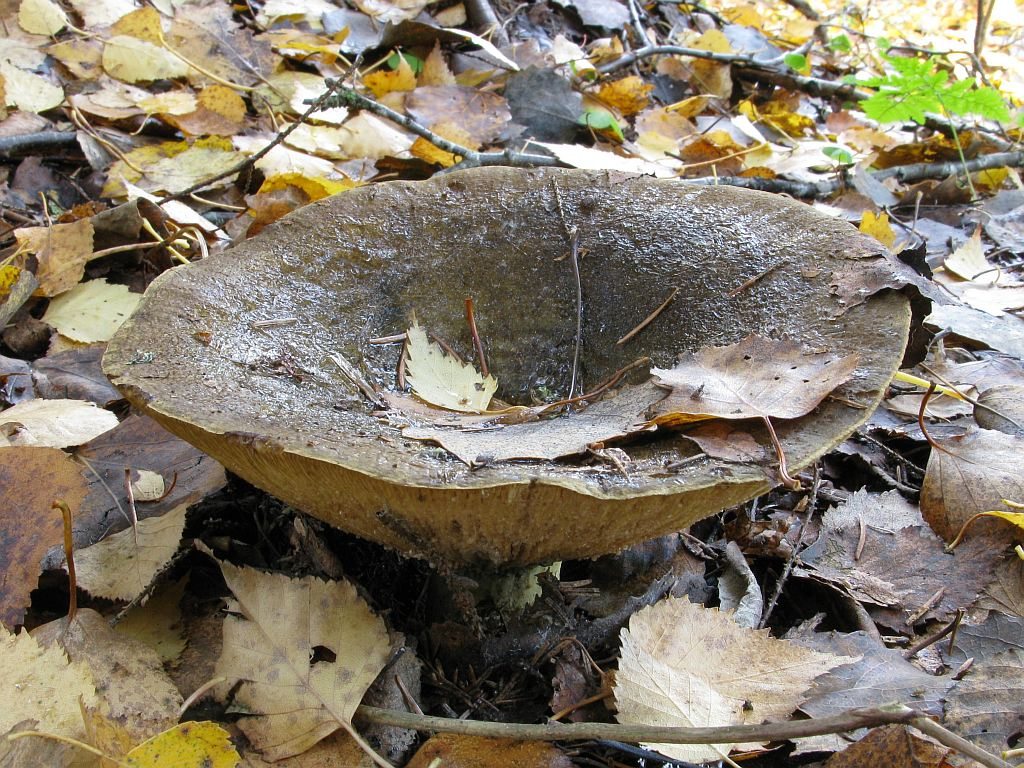
Black chest - Oak breast has a brown or reddish color of the hat, a small diameter and a solid cylindrical leg up to 7 cm high. The pulp is white and gives off a pleasant aroma. Harvested from July to September, mainly in deciduous forests.
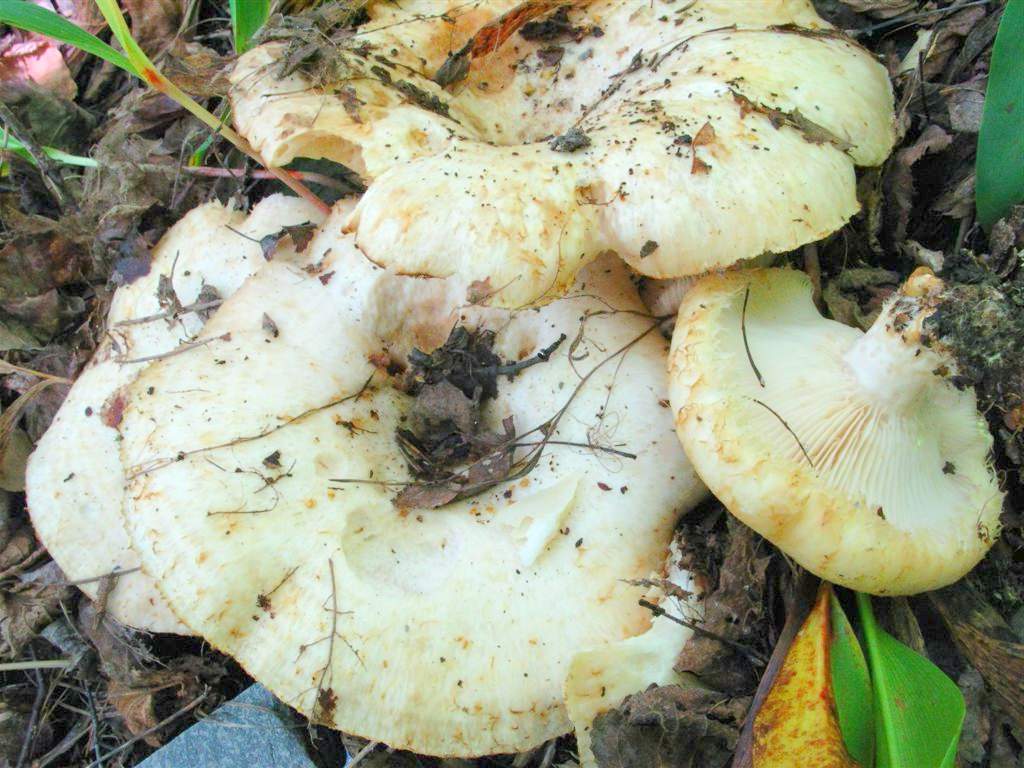
Oak Chest - Camphor mushroom with a matte hat of a brown hue, the leg is low and dense. The plates are small and frequent, and the flesh of the same color with a hat, when broken, gives off the smell of camphor. Prefers acidic soils and grows in groups.
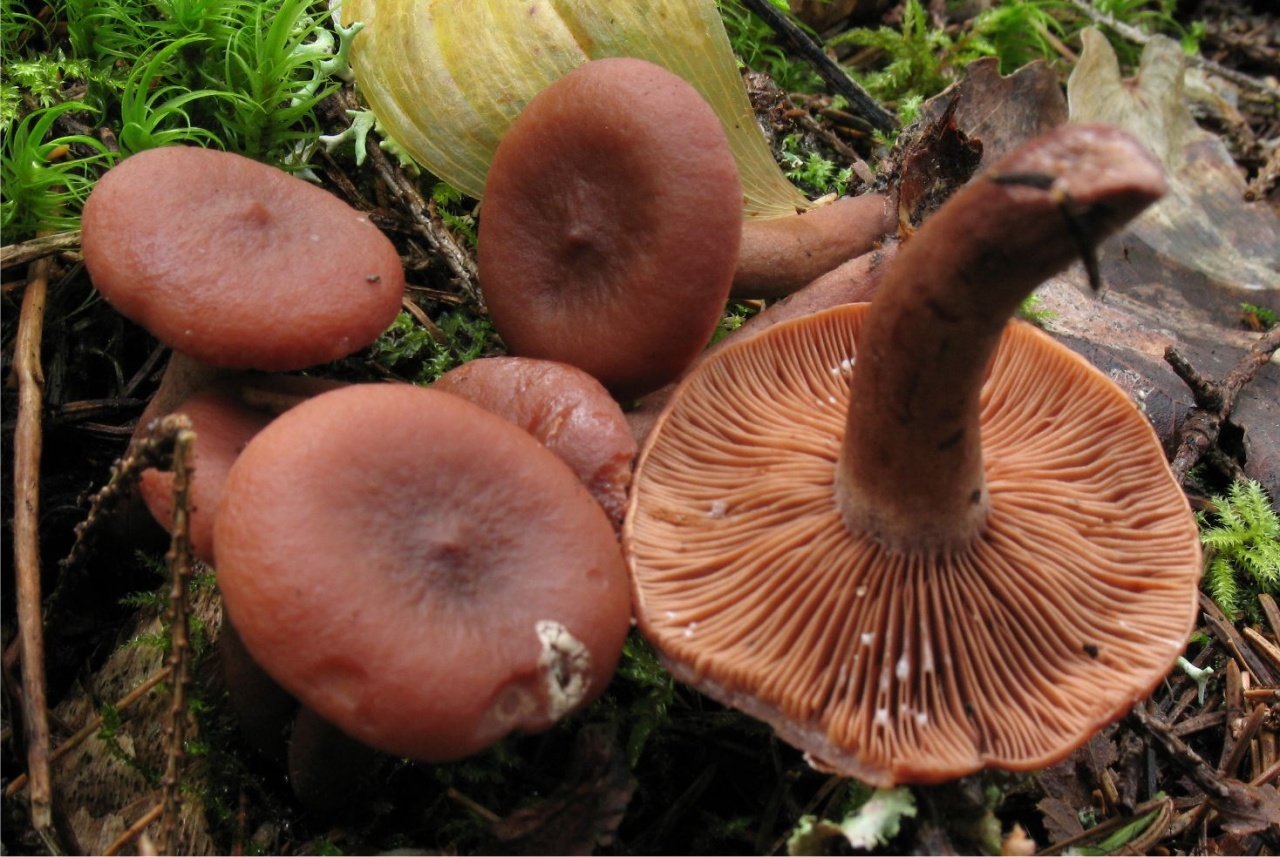
Camphor camphor - Peppercorns are distinguished by the fact that the hat has a typical crib shape in white or milky color, the shade is darker closer to the center. The dense and expanded leg below 10 cm. Milky juice is thick, and the flesh is sharp and bitter. The mushroom can be used as a seasoning in dried form.
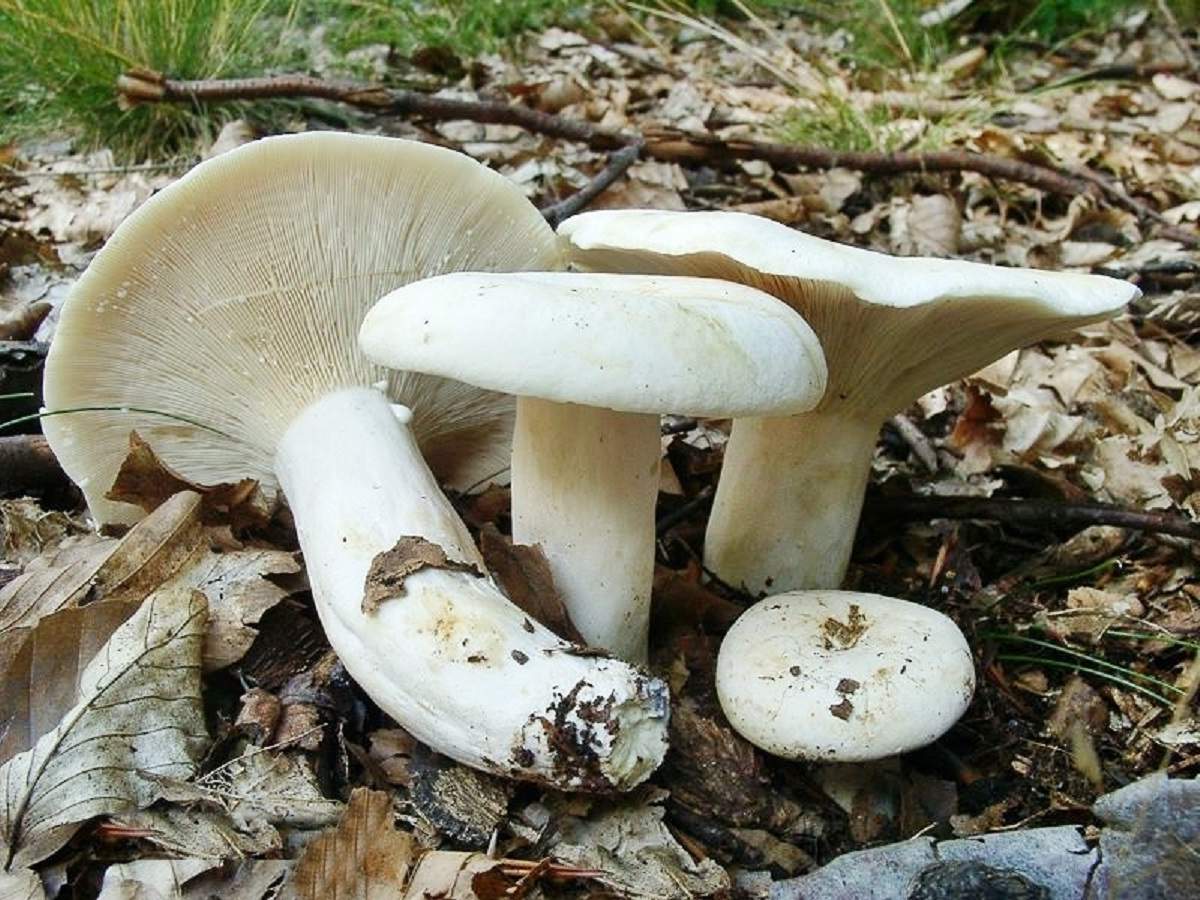
Pepper breast - The purple lump got its name due to the fact that the hat changes color to purple when pressed.The pulp is dense and fleshy, cream-colored, which becomes bluish when cut. Collect should be from August to October.
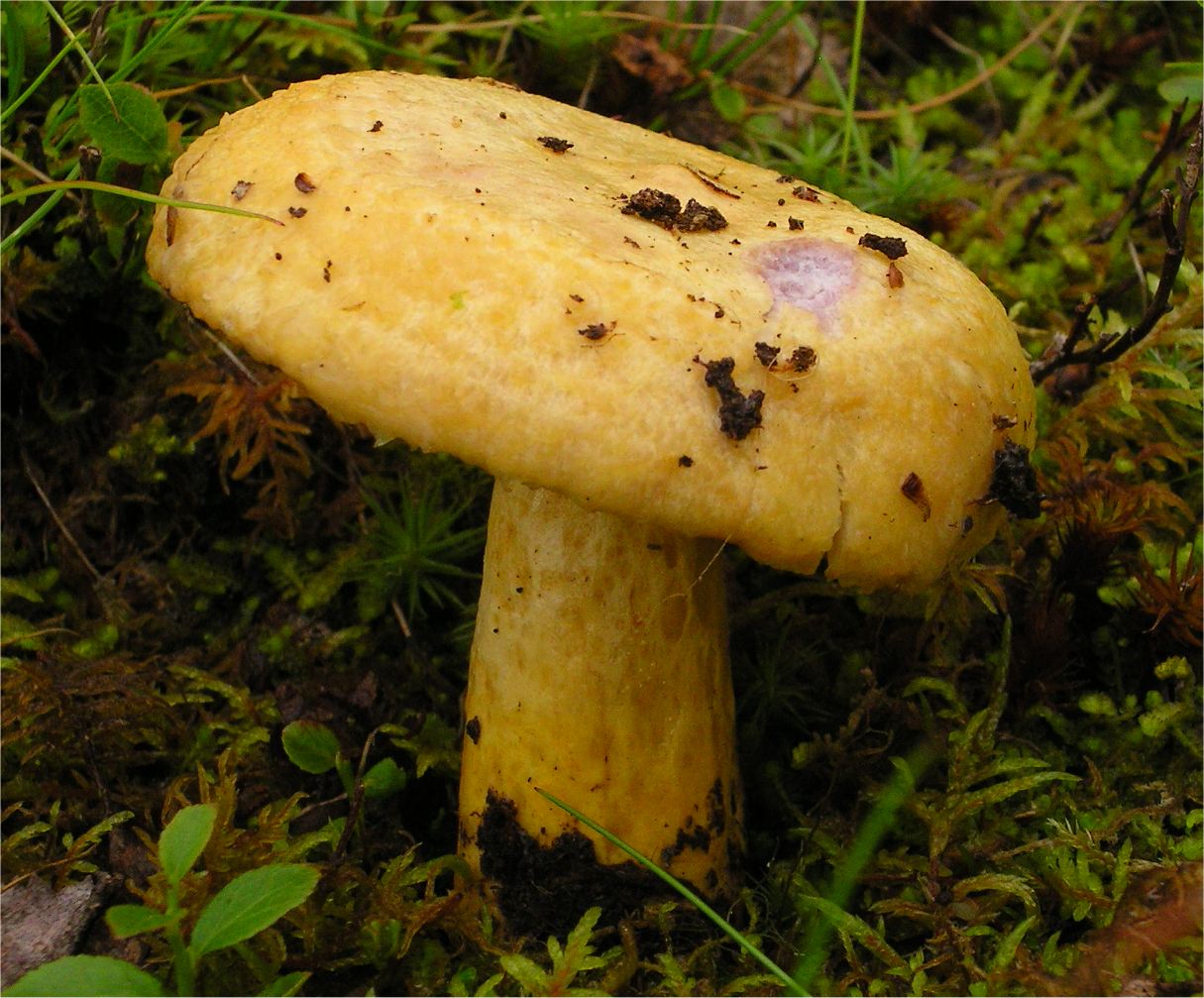
Blue chest
Inedible and false mushrooms, similar to mushrooms
False breasts are easy to distinguish, because a real mushroom has a number of external factors that make it possible to identify milky people among other inhabitants of the forest:
- funnel shaped hat;
- the presence of brown spots on the surface;
- narrow and frequent plates of milk, light color;
- elastic flesh, white and yellow;
- milky juice that appears when the hat is cut.
Black, amber and golden yellow
Inedible milkers include amber, golden yellow and resinous black fungus, which are unsuitable for consumption because of their taste, and in their structure and shape correspond to all the typical criteria of this species.
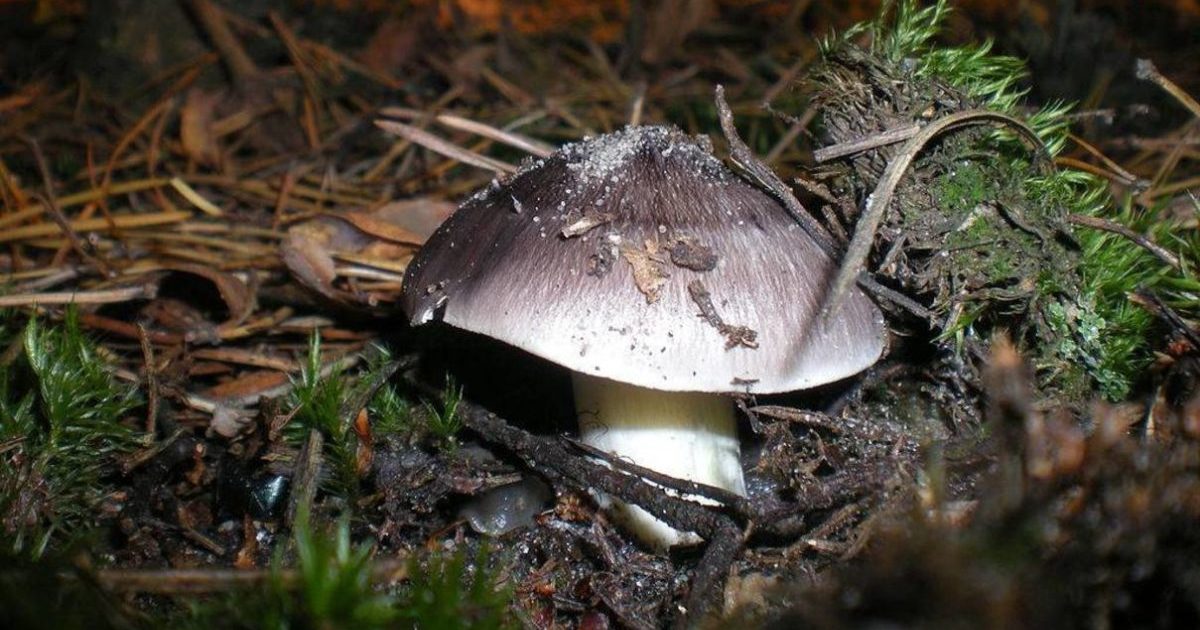 You may be interested in:
You may be interested in: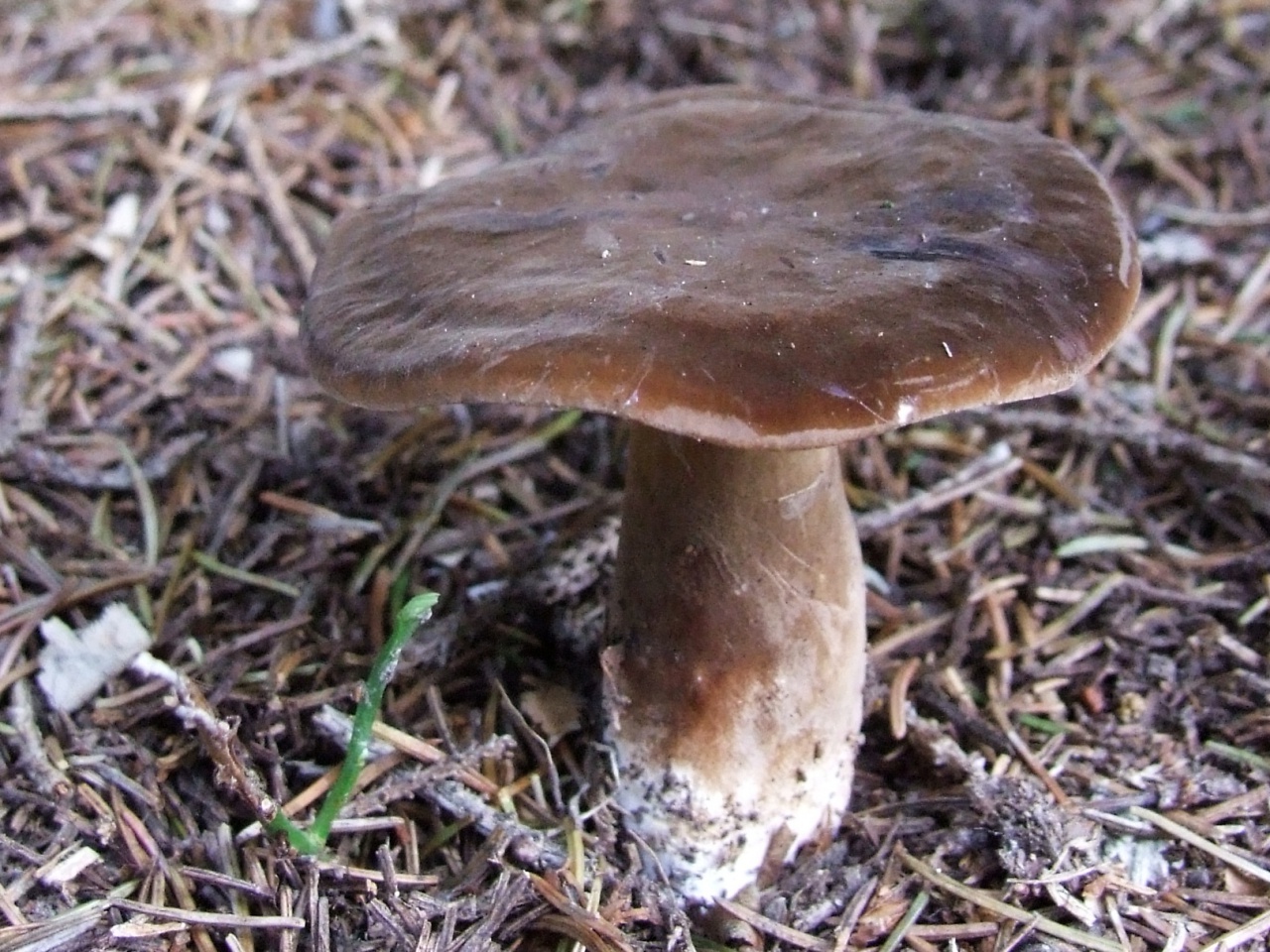
Brown mushrooms
We should not forget about the varieties of mushrooms, which require special processing conditions for use in cooking. For example, camphor - a brown mushroom that looks like edible breasts. It requires soaking and processing in order to get rid of a specific smell and harmful substances.
Useful properties and restrictions for use
The pulp of the fruiting body contains a set of chemical elements that benefit the human body. In addition to proteins and carbohydrates, it also contains vitamins of groups B1, B2, C, PP, monosaccharides and disaccharides. Mushrooms are actively used in folk medicine to increase immunity, to combat various diseases of the housing and communal services, as well as for tuberculosis.
Recipes and cooking features
Before cooking, you should conduct preliminary procedures with the fruits, namely:
- To clear fruits from forest debris.
- Rinse them thoroughly under running water.
- Soak in salted water for two days, and you need to change it twice a day.
- After that, you can proceed to any type of processing.
Mostly salted mushrooms are used to prepare dishes with the addition of mushrooms.
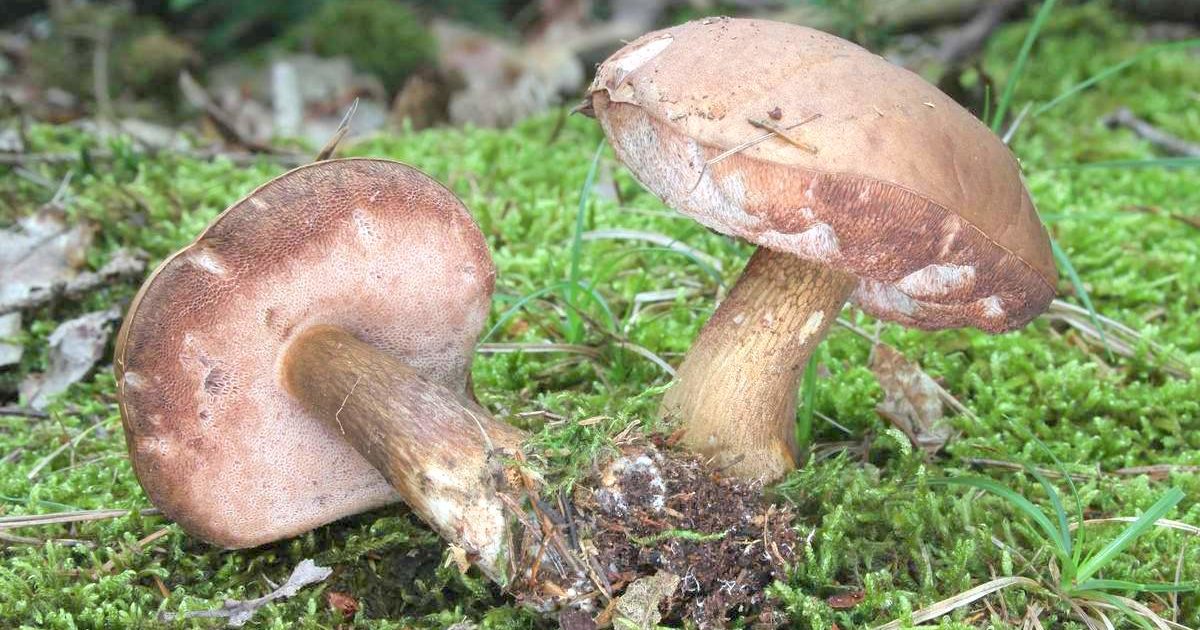 You may be interested in:
You may be interested in:Bread Salad
Ingredients:
- salted mushrooms - 400 g;
- eggs - 4 pcs.;
- potatoes - 2 pcs.;
- onion - 1 pc.;
- sour cream - 3 tbsp. spoons.
Cooking:
- Soak the mushrooms in water and chop.
- Boil potatoes and cut into cubes.
- Peel and finely chop the onion.
- Peel and divide boiled eggs.
- Mix everything and season with sour cream.
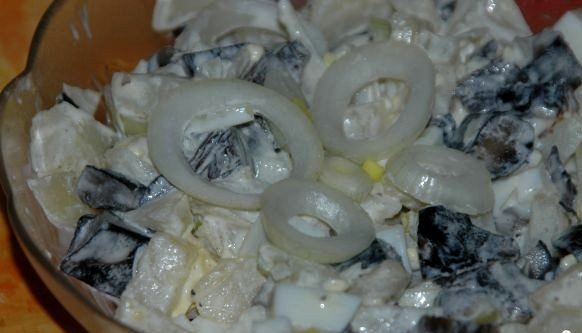
You can also make fragrant mushroom soup with buns. For this, the cooking procedure that every culinary specialist chooses and practices for himself is suitable, with the only difference being that the fruits must be boiled for 7-10 minutes in salted water.
Answers to Common Questions
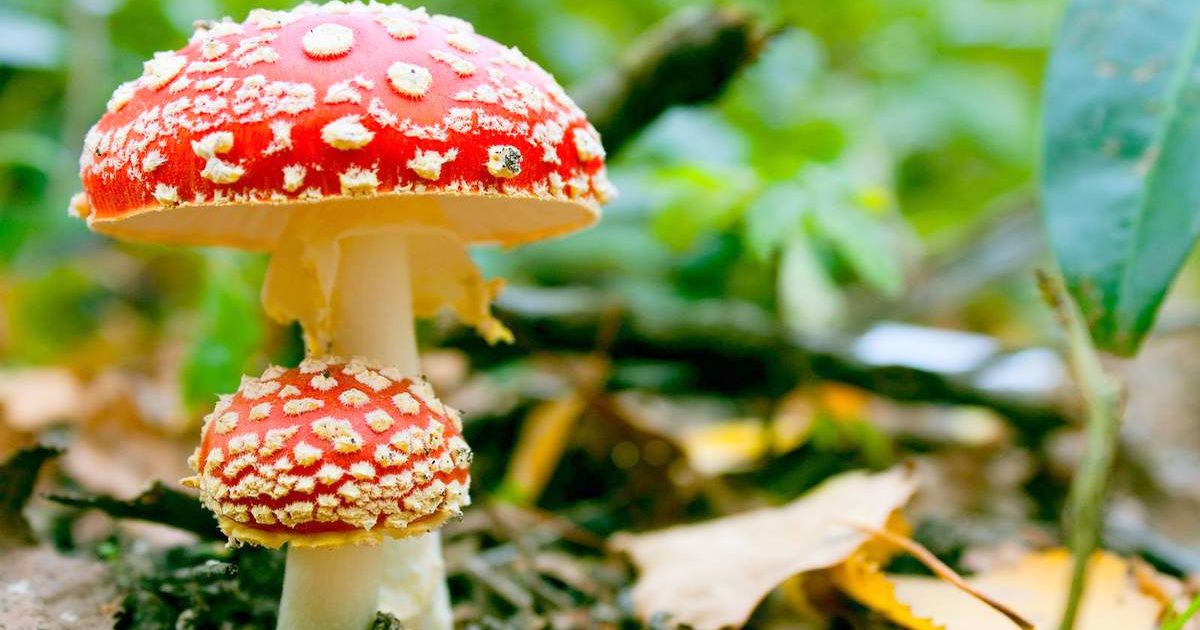 You may be interested in:
You may be interested in:There are many varieties of mushrooms, they grow almost throughout Russia and other countries of the European continent. The fruiting period is July-November. The fruits have a pronounced structure, which allows you to identify and identify the fungus. Among the mushrooms there are no poisonous species.

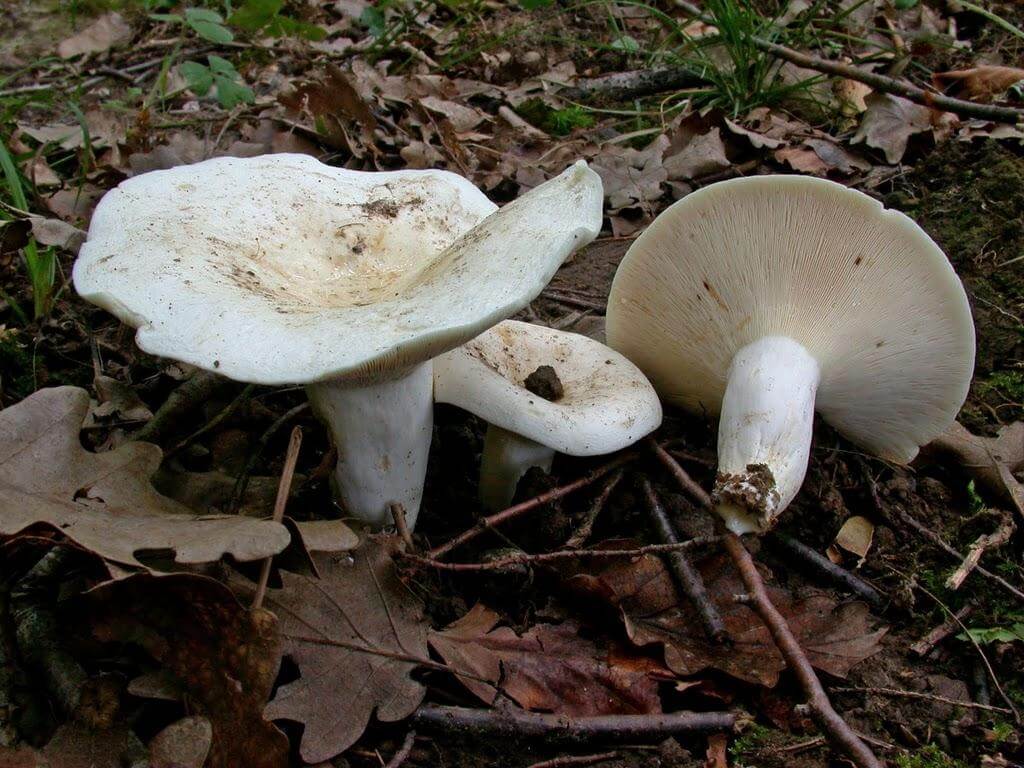
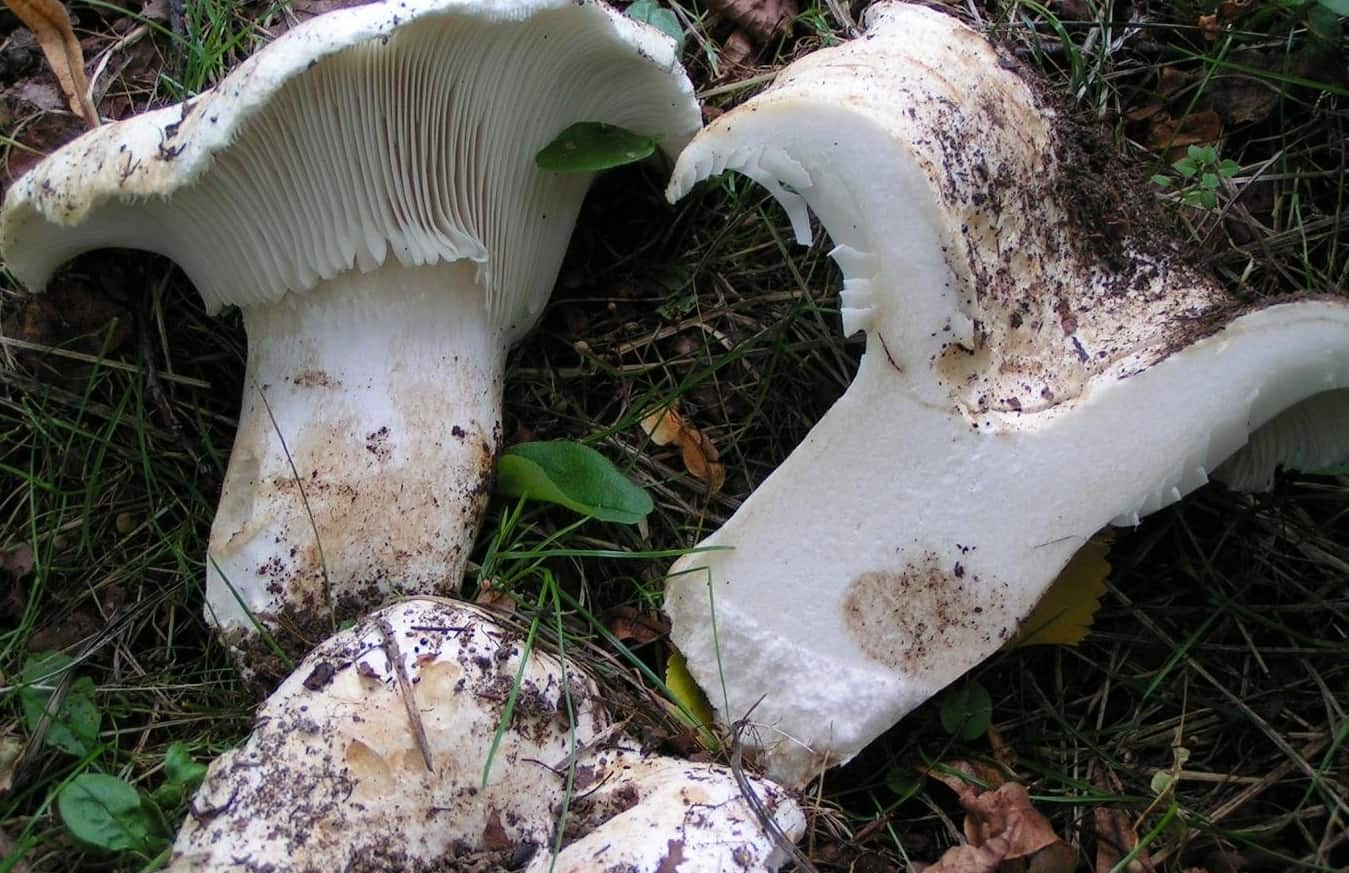
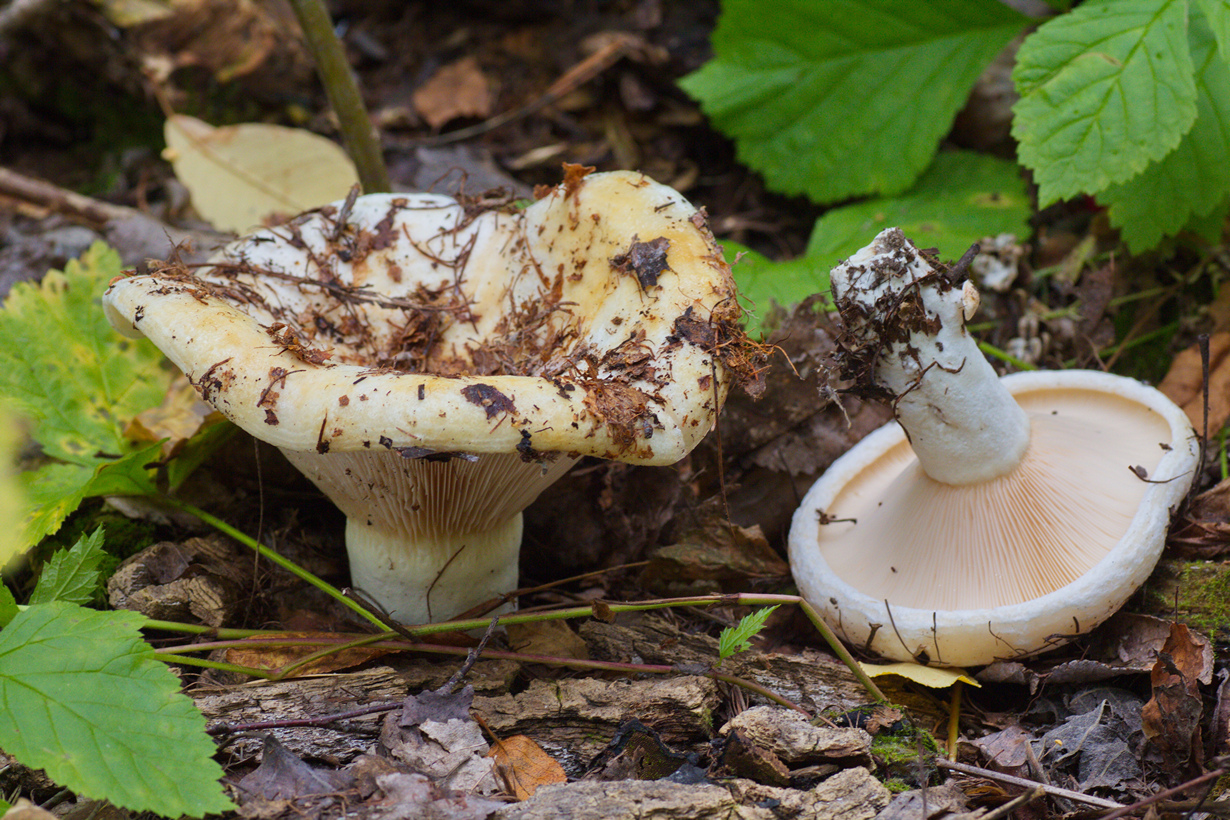
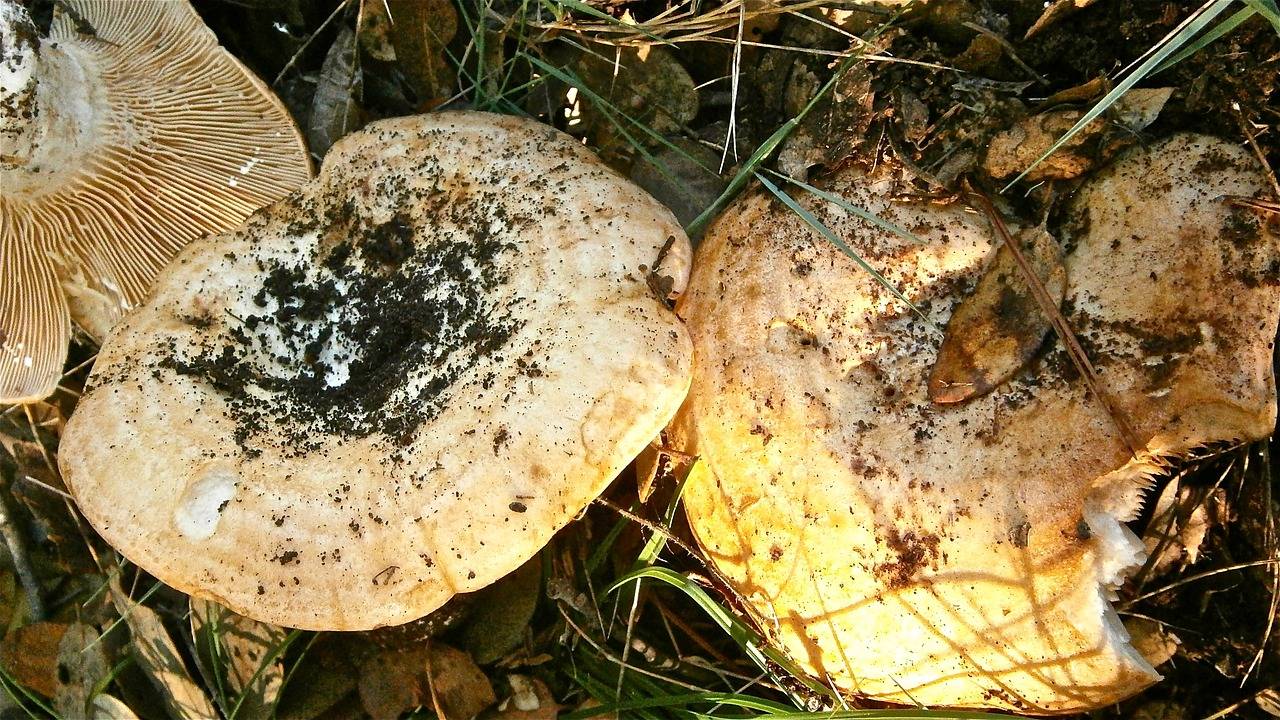
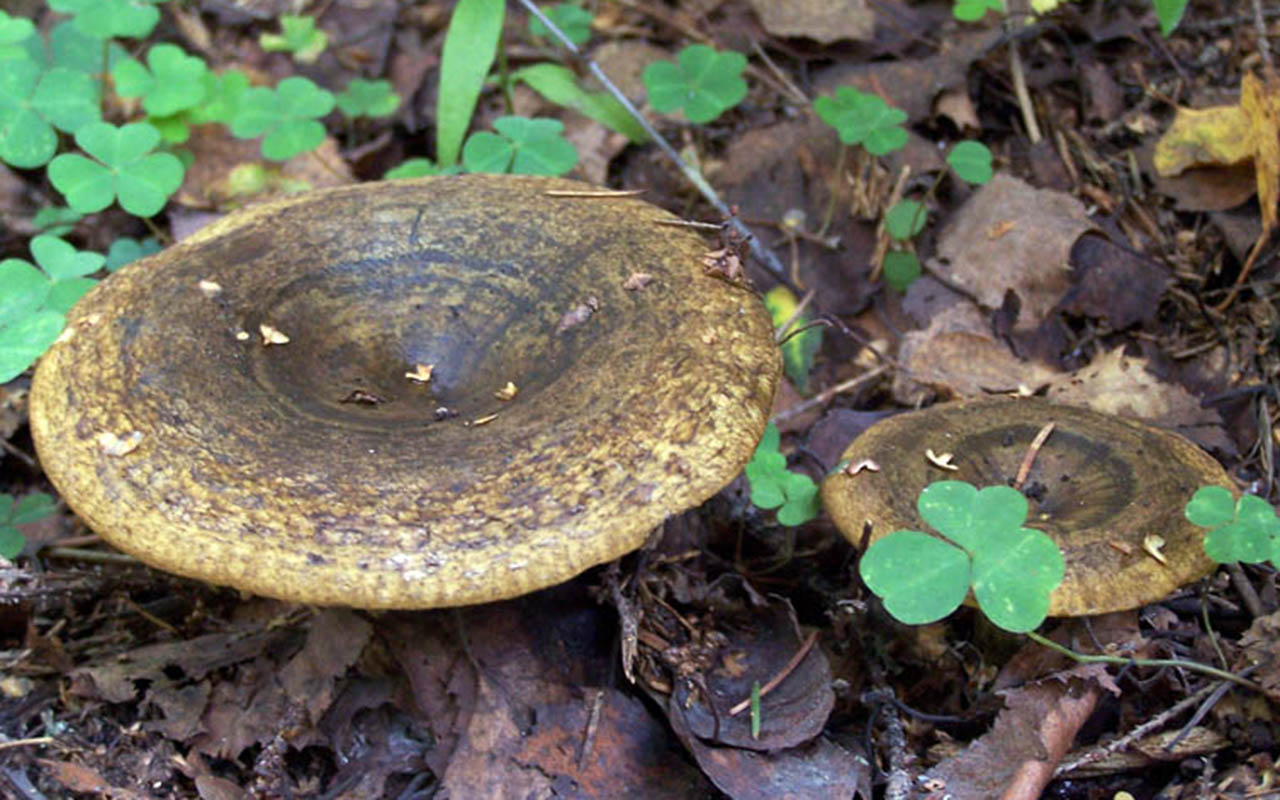
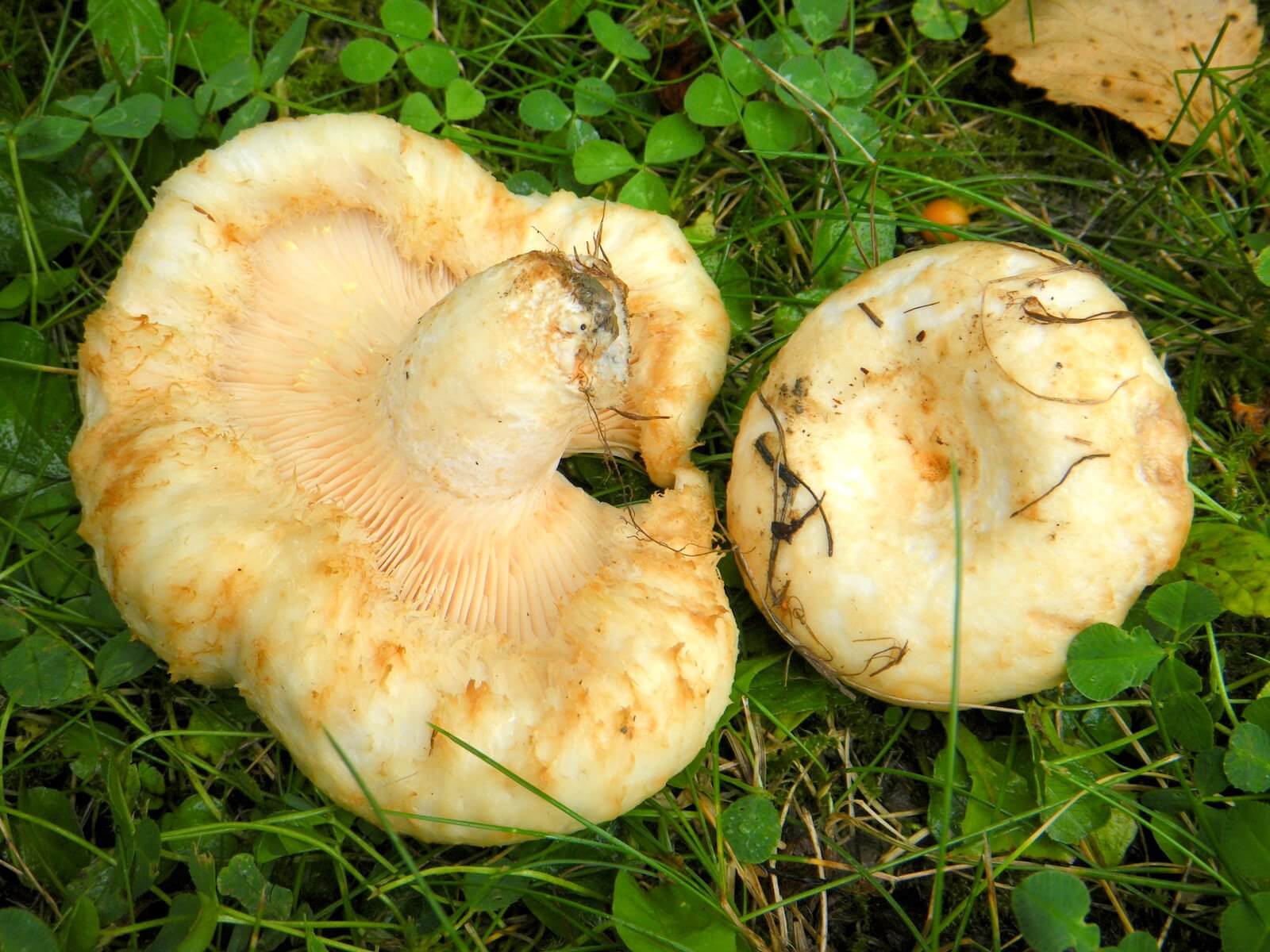
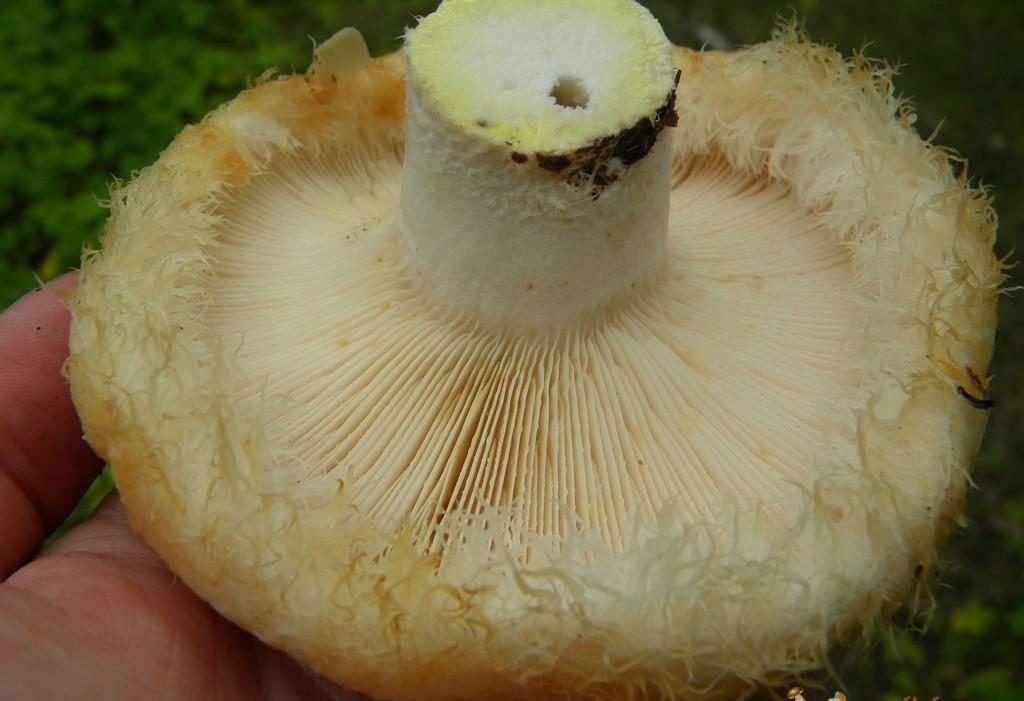
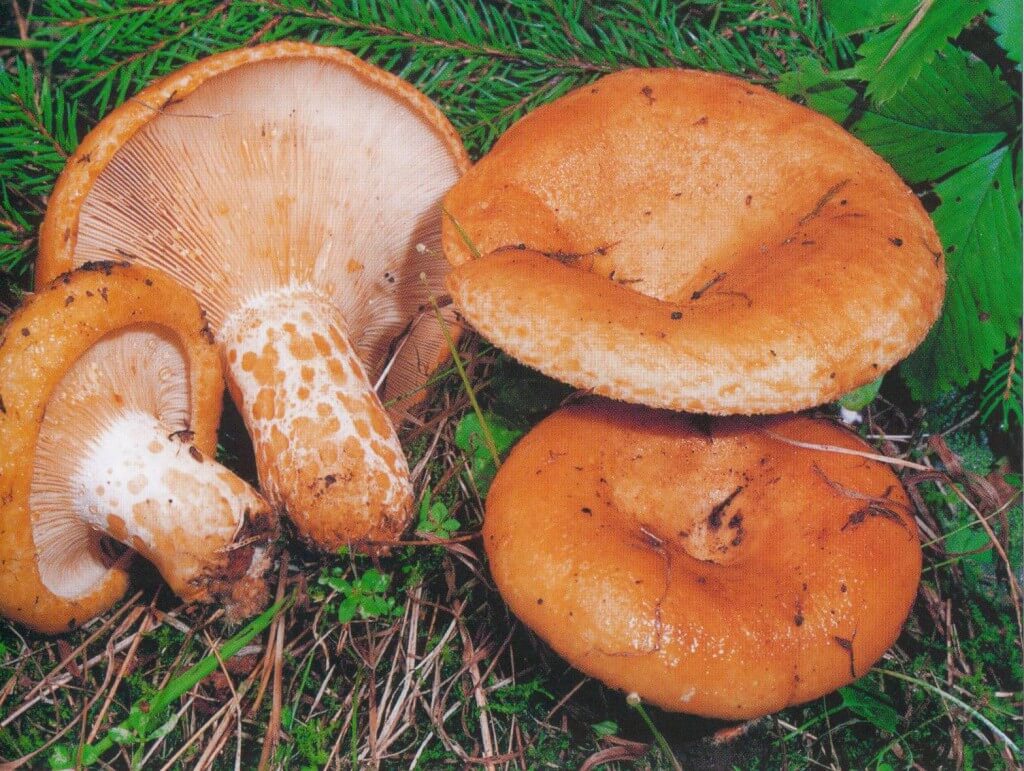
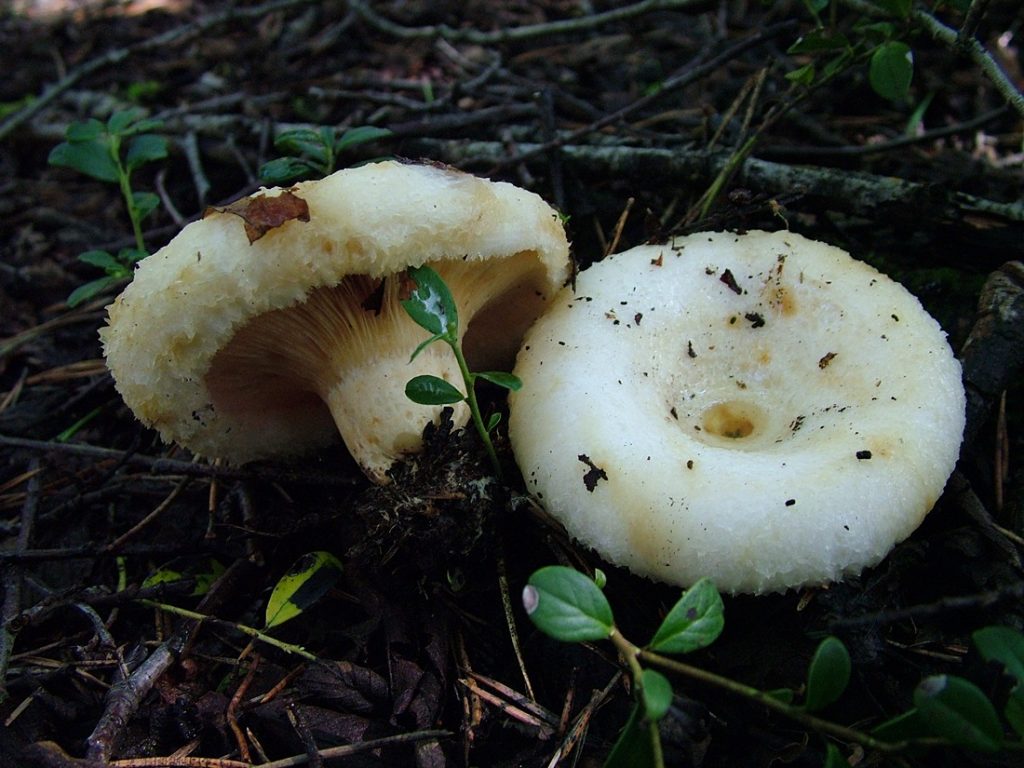
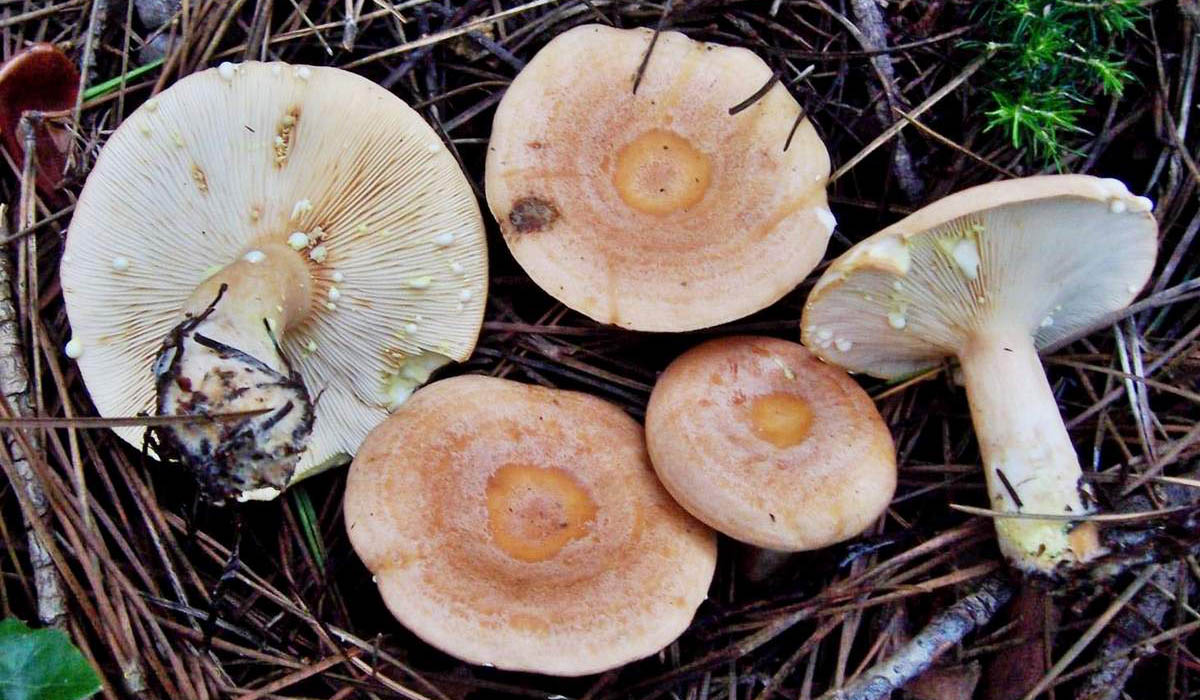
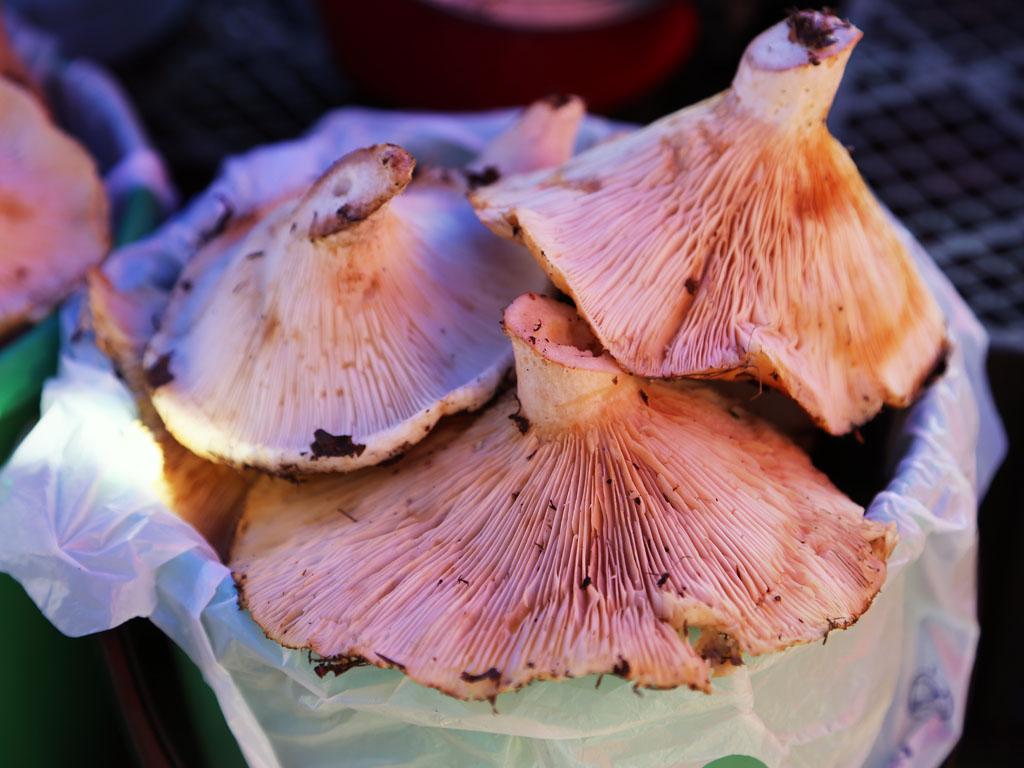
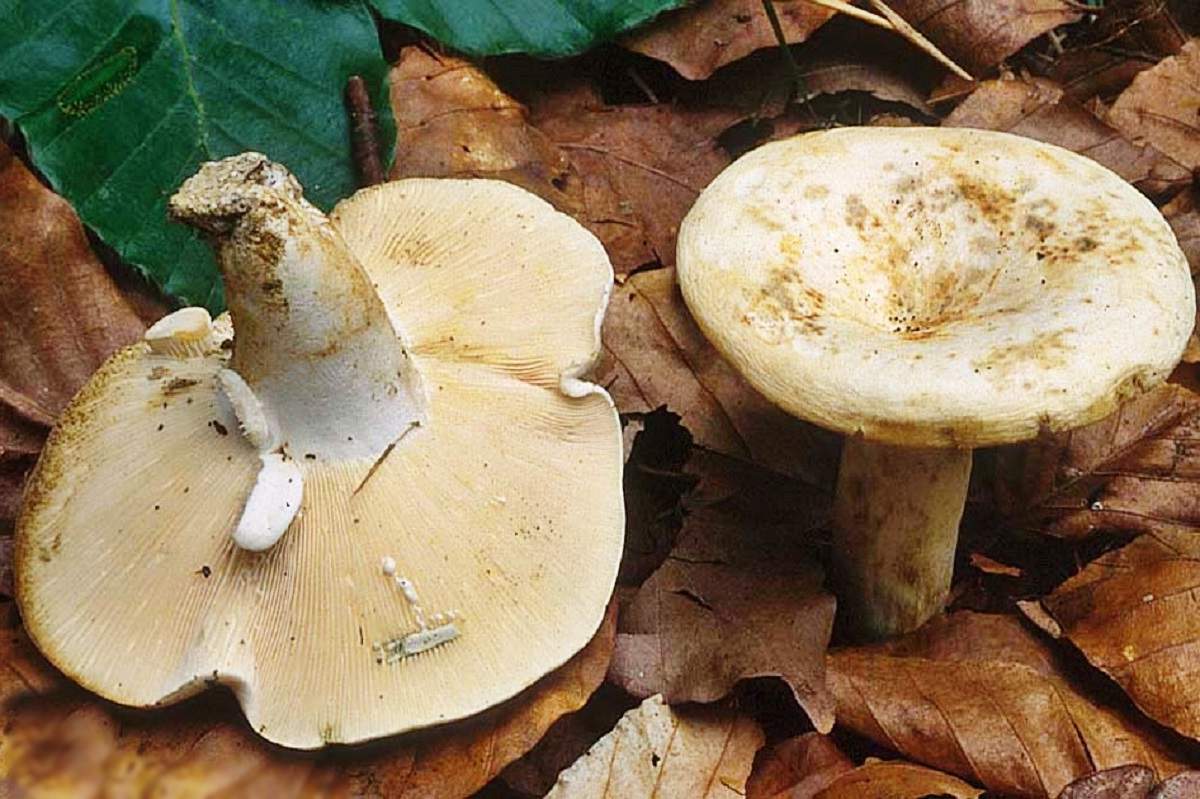
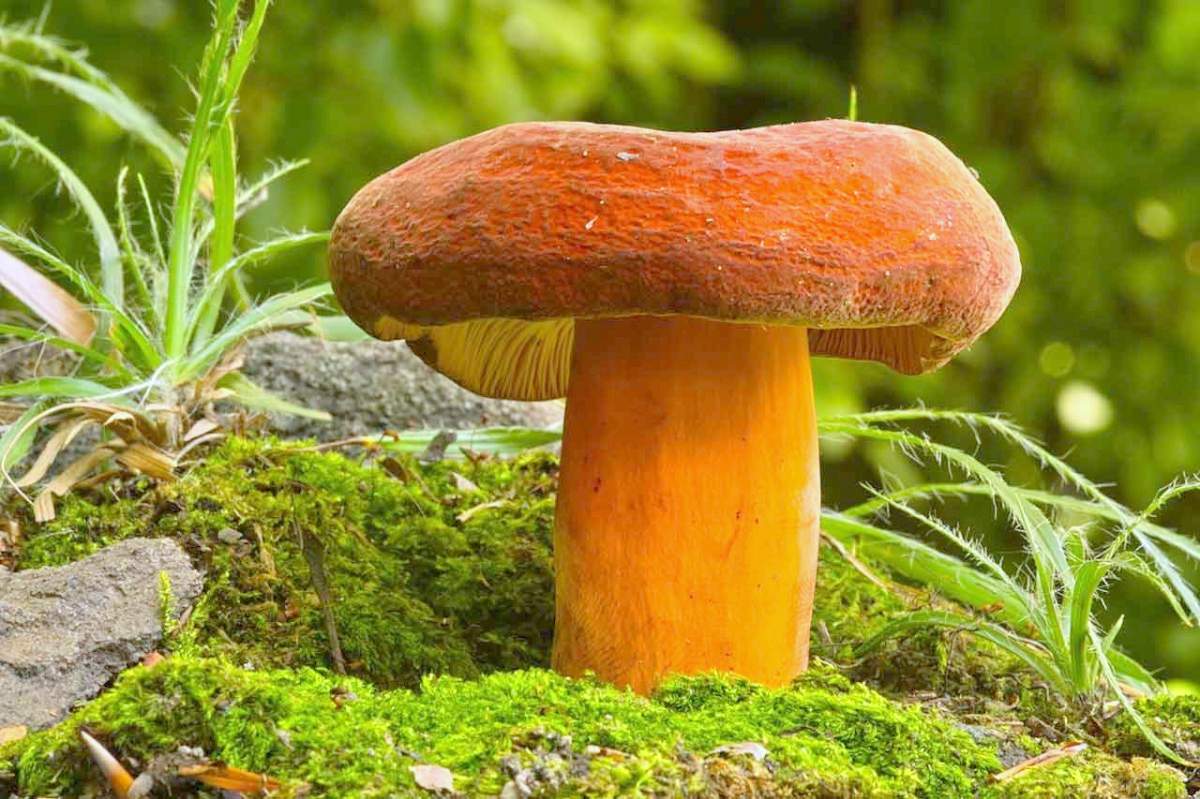

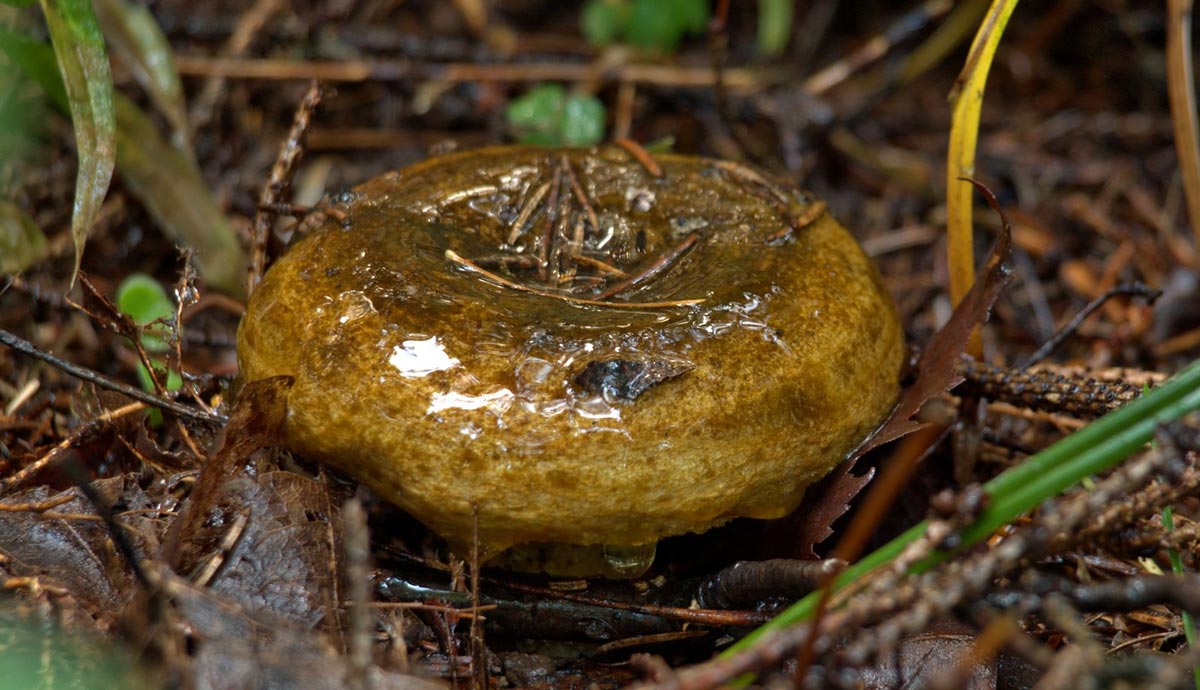



 Care and use of Kombucha at home (+22 photo)
Care and use of Kombucha at home (+22 photo) Edibility of the fungus of the motley umbrella and its description (+19 photo)
Edibility of the fungus of the motley umbrella and its description (+19 photo) Description of edible and inedible oils, their poisonous counterparts (+40 photos)
Description of edible and inedible oils, their poisonous counterparts (+40 photos) Useful properties of milk mushroom and its contraindications (+17 photos)
Useful properties of milk mushroom and its contraindications (+17 photos)
Uncle Mitya.
Useful article. All the breasts are milky. Juice of varying degrees of bitterness. but require soaking. The most delicious are white breasts, nigella. The flakes are good too. Rarely, yellow, red breasts are found, except for the color, which practically do not differ from whites and blacks in their morphology and taste. Much lower class is bittersweet, but in the poor season and in the lack of fish and mosquito - a bird. Although they require long soaking and decoction before salting. Of course, the king of salting is saffron milk cap. Also a milkman, but with non-bitter juice. Cut, salt, after 5 minutes you can eat fresh.
Antioch
All in one pile, do not know the names of each of the mushrooms? And where is the thriller - a loving girlfriend?
Nikita
What is the wildest nonsense, the author generally wrote down all the milkmen and saltwort, even bitter bitters.
Konstantin
Hello, cylindrical in your brain!